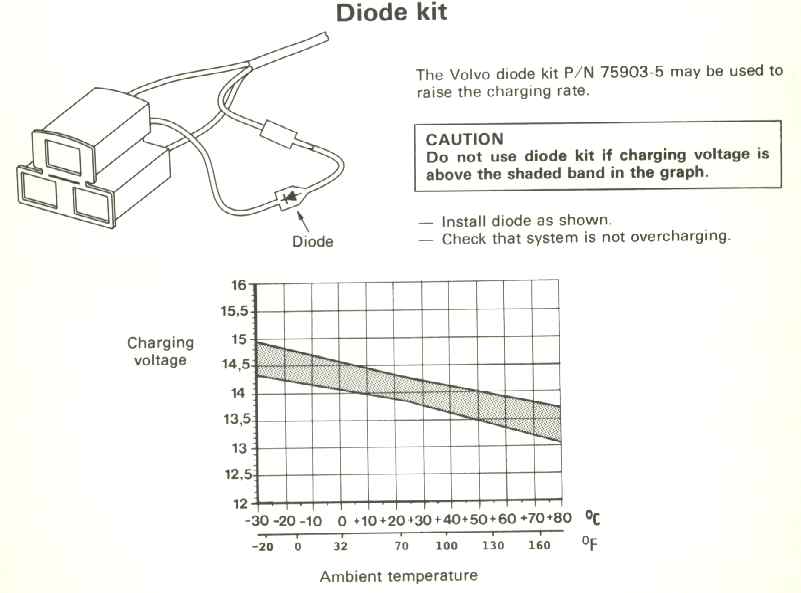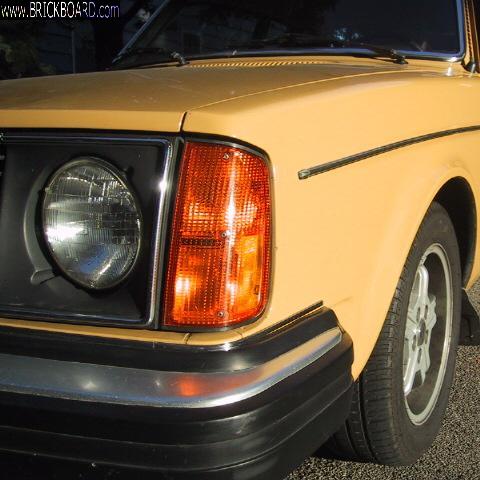|
Inga my faithful 1986 245DL has an 100 amp alternator out of a 740. I have noticed that the voltage output is always 14 volts starting up in the morning, but as you make your stops to get gas and coffee by the time you get on the road the voltage would be down near 13.3 volts. On a long drive of 300 miles with a couple of stops the voltage dropped to 12.6 volts.
That put me on a crusade to find the source of the voltage loss and having an 86 wiring was my first suspect. The power cables from the alternator and starter, and battery are new. Still the voltage dropped as the car warmed up. Lots of fuse cleaning, connection checks, and other tests without any real change.
Did the kick butt light modification per Dave Shannon, well I used new relays and spliced the old wiring. But the lighting was improved and it did seem at first the voltage did not drop as fast. But checking the voltage showed that that as the car warmed up, the voltage dropped. There have been many of modifications to the wiring also. The one constant is the voltage drops and the car heats up.
Make all sorts of charts with various grounds and at places like fuse 13, fuse 3, the alternator excite voltage, and the plus terminal of the battery. After all the measurements and I felt like I was not really finding a source of the drop.
Today on the way home at highway speeds and the swamp cooler sucking air across the coils I noticed something I should have much sooner. The voltage when you start the car cold and get up to highway speeds along at highway speeds resulted in 13.8 volts for 25 miles. When I exited the tollway and reached stop and go speeds the voltage dropped down to 13.2 volts. Got ready to take some more readings at the house and when I reaches in to measure the alt excite voltage when my arm felt all that heat off the exhaust manifold.
The light went on and I went to the garage and got the electronic freeze spray. Gave the regulator assembly a good long shot of the spray and quickly measured the voltage across the battery. The voltage had climbed to 13.8 volts. Just for luck let the alternator warm up and the voltage drop on down again. A hit with the freeze spray (I miss R12 for doing this) and the voltage climbed back up.
Heat from the manifold seems the source of the drop, at least that is the way I am headed. However how to stop the heat from reaching the alternator is going to take some sort of heat shield to deflect the heat
Anybody have something like that installed? I was thinking about a a simple shield between the regulator and the the manifold. Reflect the heat and allow the swamp cooler to pull air over the unit more efficiently. Has to be stiff enough to hold it's shape rolling down the road of course.
The thought that the 100 amp Alt is on the other side of the 740 and is not subject to the heating that it is on the 240 is also a thought. The regulator assembly could also be more sensitive to heat than the one used on the 240 units. This is a lifetime part and they will give me another unit, but this is my third unit in the last seven or eight years, and they have all done the same thing voltage wise. That is why I am headed towards blocking the heat.
Any other thoughts and tests, please let me know.
Regards,
Paul
|




